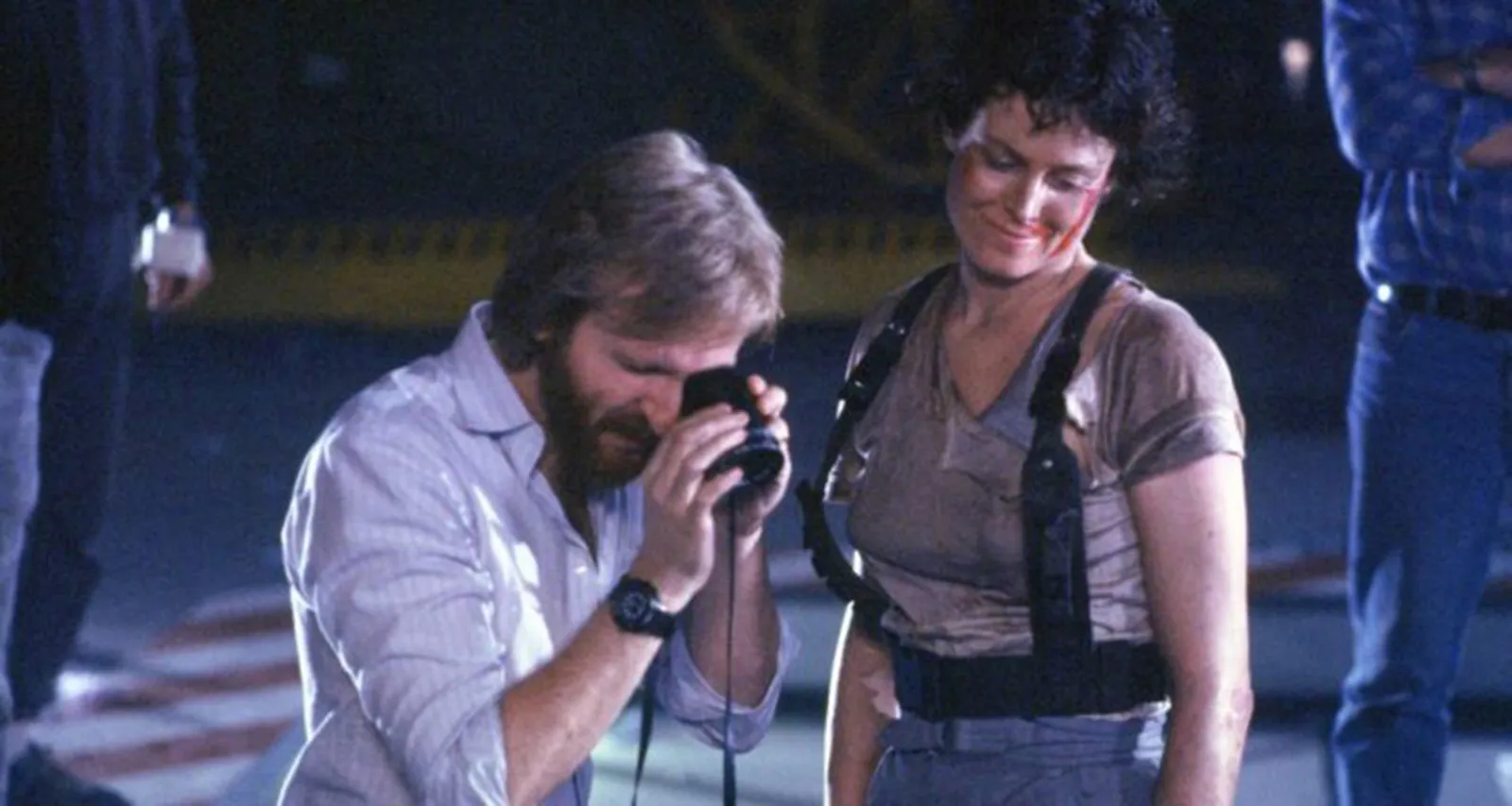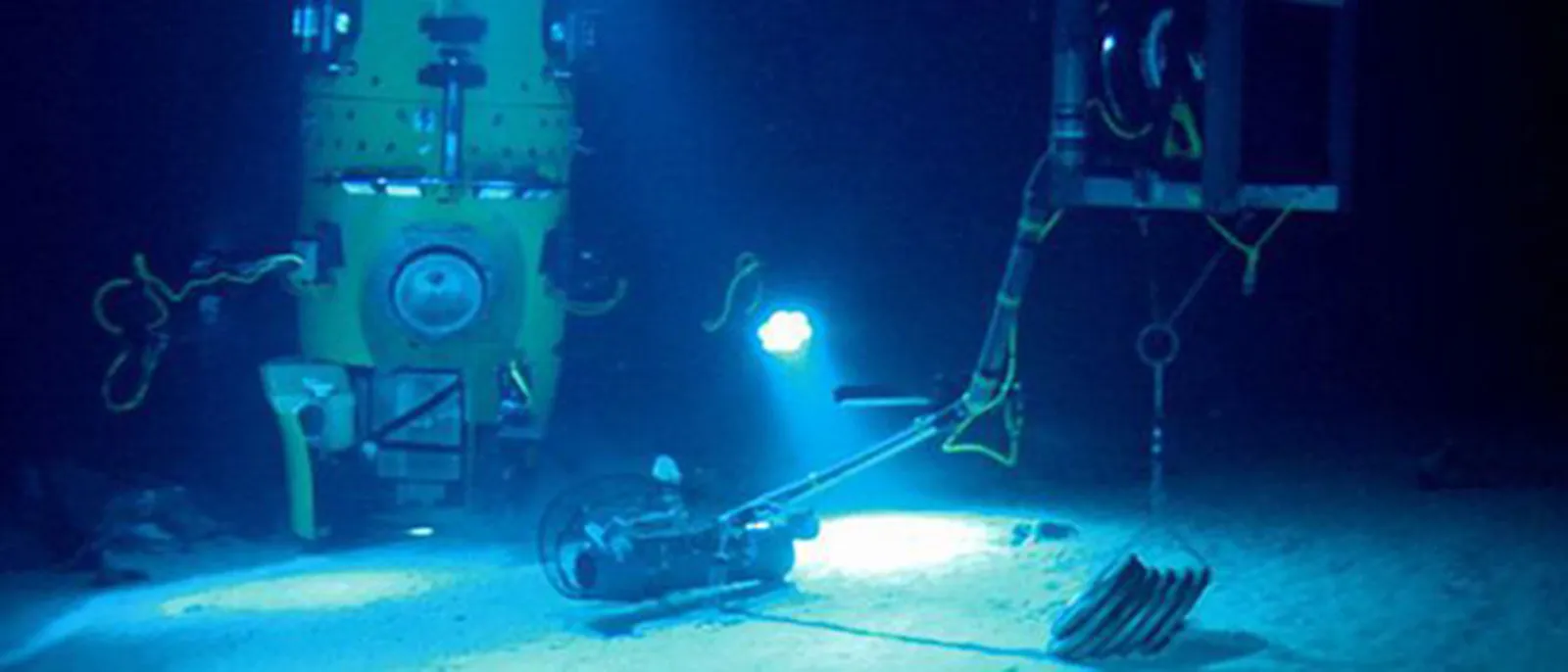James Cameron: The Secret Superhero of Uncharted Territory
With Avatar: The Way Of Water opening in cinemas, James Cameron is once again turning his cameras and ingenuity to aquatic environments. Whether it’s the briny drama of The Abyss and Titanic or the revolutionary liquid metal effects of Terminator 2’s CGI, Cameron has become famous not just for his movies, but his love of fluidity in all its forms. He’s less well known for his own remarkable exploits below the sea, a Secret Superhero combining his filmmaking skills with his engineering acumen to discover both new habitats and new life.

BUFFALO SCUBA
James was born in 1954 in Kapuskasing, a small village in Northern Ontario, and his remote upbringing helped to fuel his early interest in distant and strange environments. He traveled by bus for over an hour each way to high school, filling the time by reading science fiction, and when out of school he roamed the woods near his home, catching bugs and taking samples of pond water to examine under his bedroom microscope. As he would later explain, “it was all about trying to understand the world, understand the limits of possibility”.
"The brand new social experience where you activate your gaming skills as you train like a spy."
- TimeOut
Take on thrilling, high-energy espionage challenges across different game zones.

Another inspiration was the work of the filmmaker and oceanographer Jacques Cousteau, whose Undersea World documentaries brought footage of the aquatic realm into people’s homes for the first time. James was enraptured by these remarkable shows, and made a strong connection between the hidden marine world and the worlds of science fiction. “The Jacques Cousteau shows actually got me very excited about the fact that there was an alien world right here on Earth. I might not really go to an alien world on a spaceship someday -- that seemed pretty darn unlikely. But that was a world I could really go to, right here on Earth, that was as rich and exotic as anything that I had imagined from reading these books.” At the age of 15, he made the decision that he was going to become a scuba diver. This was a challenging ambition as he lived 600 miles from the nearest ocean, but he was eventually certified as a scuba diver at a YMCA swimming pool in Buffalo, New York. He wouldn’t see the ocean for another two years, when the family moved to California.
BIRTHING ALIENS ON A BUDGET
After graduating high school, Cameron signed up at a local community college to study physics, before switching courses to English. He was unsure what he wanted to do with his life, and eventually dropped out of college altogether, taking jobs as a machinist and a school janitor before settling into a role as a truck driver. He would later tell Neil deGrasse Tyson on the StarTalk podcast that “I figured maybe if I wanted to be a writer I should see a bit of life. So I got married, got a house in the suburbs… I’m 23 by the way, I was over life by the time I was 24. ‘OK, that’s enough life. Let’s get back to science fiction!’”
Another major influence on that decision was Star Wars, which had a profound effect on Cameron. He describes seeing it in the cinema where, instead of being transported by the special effects, he was terrified that he was missing an opportunity: ‘Oh wow, I better get off my butt because somebody is doing this stuff, you know, and they’re beating me to it.' He wasted little time in catching up, securing a loan of $20,000 from a local dentist who funded his first project, a short film called Xenogenesis, as a tax write-off. Cameron shot the film in his living room, creating a battle scene between a human powered mech and an enormous alien through improvised special effect techniques. The dentist was not impressed, but the film was sufficiently well made to get the attention of the influential low budget filmmaker Roger Corman, who handed Cameron his directorial debut on Piranha II: The Spawning, released in 1982. The 94 minute long film effectively had a smaller per-minute budget than Xenogenesis, costing just $145,786 to make.

RETURNING TO THE OCEANS
This was an inauspicious start for a director famed for handling enormous budgets, and it also didn’t pay well. James found himself living out of his car while working on his first major film script, but his determination to have the film made led him to sell the script for just one dollar, with the proviso that he be allowed to direct the movie. The result was 1984’s box office smash The Terminator, which firmly established Cameron as one of Hollywood’s leading action directors, and was swiftly followed by the similarly successful Aliens in 1986. Cameron now effectively had a blank cheque with Hollywood studios to pursue whatever project took his fancy, and his attention returned to uncharted territory under the sea.
This began with 1989’s The Abyss, a near-future thriller where underwater ROVs (Remote Operated Vehicles) discover a strange and advanced form of non-terrestrial intelligent life on the ocean floor. While the special effects were spectacular and the film critically acclaimed, the movie was less commercially successful than Cameron’s earlier sci-fi smashes. Undeterred, he took the revolutionary liquid effects that had underpinned The Abyss and brought them into the Terminator universe, creating one of the biggest box office successes in history with 1991’s Terminator 2.
At this point James wrote the first draft of the script for Avatar, but as he would later say the technology to realize his vision did not yet exist, “so I shelved it, and I made this other movie about a big ship that sinks”. The inspiration for Titanic came from Cameron’s love of underwater filming, and hinges on footage shot of the real Titanic using submersibles and ROVs. James describes how he found himself looking at the wreck of the Titanic and having “an experience that Hollywood couldn’t give me… I could imagine a creature and we could create a visual effect for it. But I couldn't imagine what I was seeing out that window. As we did some of our subsequent expeditions, I was seeing creatures at hydrothermal vents and sometimes things that I had never seen before, sometimes things that no one had seen before, that actually were not described by science at the time that we saw them and imaged them.” The experience was so revelatory that he abandoned Hollywood completely to become a full-time marine explorer.

THE LOWEST POINT ON EARTH
Cameron’s combination of a director’s vision and an engineer’s sensibilities made him a formidable explorer. In 2011 he was named National Geographic’s “Explorer in Residence” - making him only one of 15 people to have been given the role - and he set about justifying his title with a remarkable undertaking. He created the Deepsea Challenger bathyscaphe, a submersible vehicle designed to plumb the deepest depths of the ocean, and also revolutionary high definition 3D cameras capable of operating under enormous atmospheric pressure. He then embarked on a series of dives that took him first to the bottom of the New Britain Trench, five miles below the surface of the Solomon Sea, and then 19 days later he dived to the Challenger Deep at the bottom of the Mariana Trench, the deepest point of the seabed on Earth. The 6.7 mile descent to the Challenger Deep took two hours and thirty six minutes, and Cameron was the first person to journey to this point solo, as well as the first person to spend a significant period (three hours) on the seabed. Perhaps more importantly, he was the first person to journey to this point with high quality camera equipment, and he was able to identify a cornucopia of new species, including a sea cucumber, a squid worm and a new variety of xenophyophorea, a giant single-celled amoeba.
This discovery of strange new life in alien environments would be a fitting end to a career that started with a project called Xenogenesis, but James Cameron’s career is far from over. He has worked with NASA to modify his camera technology for space flight, and his remarkable exploratory feats have further informed his filmmaking, as he has returned to more traditional camerawork with 2022’s Avatar: The Way of Water. Hopefully he can continue to marry his directorial pursuits with his adventurous ones, as a Secret Superhero whose best work is carried out in uncharted territory.
SPYSCAPE+

Join now to get True Spies episodes early and ad-free every week, plus subscriber-only Debriefs and Q&As to bring you closer to your favorite spies and stories from the show. You’ll also get our exclusive series The Razumov Files and The Great James Bond Car Robbery!


Gadgets & Gifts
Explore a world of secrets together. Navigate through interactive exhibits and missions to discover your spy roles.
Your Spy Skills
We all have valuable spy skills - your mission is to discover yours. See if you have what it takes to be a secret agent, with our authentic spy skills evaluation* developed by a former Head of Training at British Intelligence. It's FREE so share & compare with friends now!
* Find more information about the scientific methods behind the evaluation here.


Stay Connected
Follow us for the latest
TIKTOK
INSTAGRAM
X
FACEBOOK
YOUTUBE